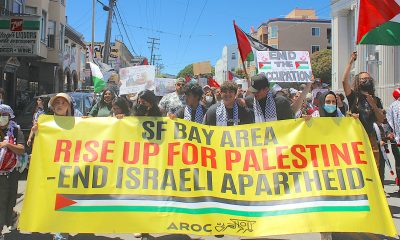World
For Haiti, Relief Will Come in the Long Term

By Safiya Mann
Special to the NNPA from the New York Amsterdam News
On Jan. 12, 2010, a 7.0 magnitude earthquake shook Haiti, taking more than 230,000 lives and displacing over 1 million people, causing a massive housing crisis. Compounding the emergency situation were confusion and violence. Although immediate responses for aid poured into Haiti from around the world, a recent scandal has swirled around the relief efforts of several organizations pertaining to the allocation of their resources and the seemingly meager returns that can be seen on the ground.
The Amsterdam News sat down with Diana Skelton, deputy director general of the ATD Fourth World, an international nonprofit organization that tackles overcoming poverty and the injustices that accompany it, such as social exclusion.
AmNews: To start, please expand upon the difference between long-term and short-term aid.
Skelton: First, aid refers to getting outside help, when long-term help can come from within, which sometimes short-term aid doesn’t support (looking for solutions from inside the affected populations), which can end up counter productive. A lot of times solutions to a crisis are not thought through with a community, which can inhibit development, looking to community leaders can be a great resource for
What was your team’s experience with the 2010 earthquake?
The Fourth Word volunteers have been in Haiti for 30 years. At the time of the earthquake, they were in a district of 20,000 people. The U.N. had designated this particular district as a “no-go zone” for their workers because of safety concerns, which caused other NGOs (non-governmental organizations) to follow suit, which led to this district being underserved.
The team had a close experience with the earthquake, and the effects in the district were terrible. It really destroyed livelihoods. And in addition to the initial shock, the district was underserved by aid and there was widespread hunger. Essentially, the aid was very unequally distributed.
The ATD Fourth World partnered with another organization to allocate food resources, which resulted in a concentrated effort between youth in the community, ATD volunteers and other community residents to find children, particularly children 5 and under, and provide them with food and help. This is an example of needing the expertise of the members of the community to provide effective help.
What was the main form of short-term food aid?
The main form of short-term food aid is this: An organizations truck shows up unannounced in an area and then drops of rations in the area. This causes conflicts because people are dealing with uncertainty over a valuable and finite resource, and since it is first come first serve, it only increases the chances of violence.
What are other ways than just financial aid that a country could be rebuilt?
Because those five years didn’t do enough to draw from the experiences and knowledge of people in poverty, and you see large sums of money being poured into Haiti. But a lot of times, those large sums of money go towards hiring an expert from another continent to come in, not knowing the language, not knowing the people, not knowing the culture, and to say here’s my plan.













































